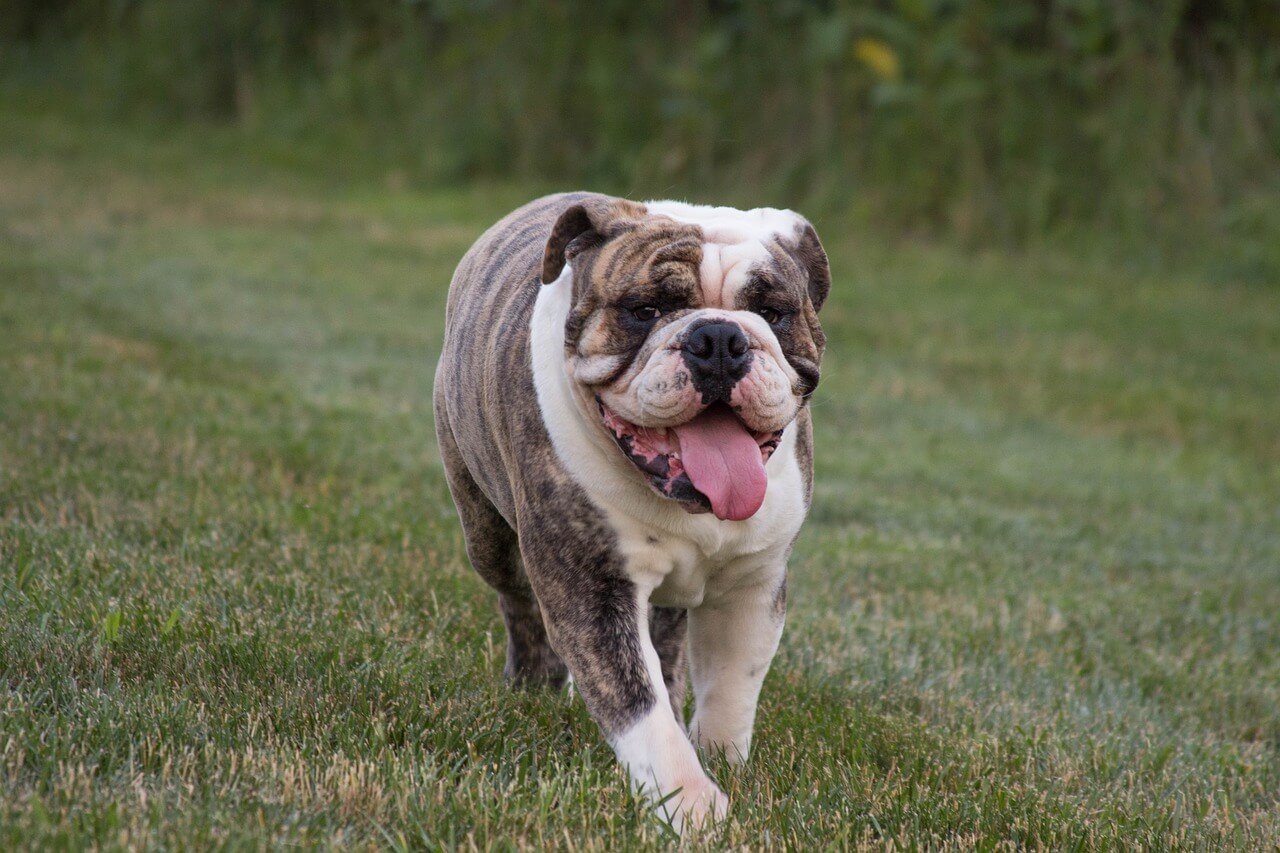Why Is My Dog Suddenly Limping on Their Back Leg?
Seeing your dog limp can be alarming, especially when it seems to come out of nowhere. Whether they’re hobbling after a playful romp in the park or struggling to put weight on their back leg during a quiet evening at home, limping is often a sign that something isn’t quite right. While some causes are minor and resolve on their own, others may require immediate veterinary attention. Understanding why your dog might be limping and how to respond can make all the difference in ensuring their comfort and recovery. Let’s explore the potential reasons behind this behavior and what you can do to help your furry friend feel better.
Common Causes of Sudden Back Leg Limping in Dogs
There are several reasons why your dog might suddenly start limping on their back leg. Identifying the underlying cause is the first step toward addressing the issue effectively.
Injury from Overexertion:
Vigorous play or exercise can lead to muscle strains or sprains, causing temporary lameness in your dog’s back leg.Foreign Objects in the Paw:
Thorns, splinters, or sharp debris lodged in the paw pad can cause pain and limping. Inspect their paws carefully for any signs of injury.Cruciate Ligament Tear:
A torn cranial cruciate ligament (CCL) is a common orthopedic injury in dogs, often resulting in sudden lameness after strenuous activity.Arthritis or Joint Pain:
Older dogs or those with pre-existing joint conditions may experience flare-ups of arthritis, leading to stiffness and limping.Patellar Luxation:
This condition occurs when the kneecap slips out of place, causing intermittent limping that may resolve temporarily but requires veterinary evaluation.
By understanding these potential causes, you can take appropriate action to address your dog’s discomfort and seek professional care if needed.

Signs That Your Dog Needs Immediate Veterinary Attention
While some cases of limping are mild and resolve on their own, others may indicate a serious issue requiring prompt treatment. Recognizing warning signs can help you act quickly to protect your dog’s health.
Severe Swelling or Deformity:
Noticeable swelling, bruising, or an abnormal angle in the leg suggests a fracture or dislocation that needs urgent care.Inability to Bear Weight:
If your dog refuses to put any weight on the affected leg, it could indicate a significant injury like a ligament tear or broken bone.Persistent Whining or Vocalization:
Continuous signs of pain, such as whimpering or yelping, are red flags that your dog is experiencing severe discomfort.Lethargy or Loss of Appetite:
Changes in behavior, such as reluctance to move or eat, may signal systemic issues beyond just the limping.Warmth or Heat Around the Joint:
Warmth or heat in the affected area could indicate inflammation or infection, requiring immediate veterinary assessment.
If your dog exhibits any of these symptoms, don’t delay—seek professional advice to ensure their well-being.
Check this guide 👉Young Dog Back Legs Collapsing: Best 7 Expert Tips!
Check this guide 👉Dog Wheelchair for Back Legs: Best 7 Health Tips!
Check this guide 👉Why Does My Dog Keep Stretching His Back Legs? Best 7 Tips!
Possible Causes of Limping | Recommended Actions |
|---|---|
Muscle strain or sprain | Rest, ice packs, and gentle massage |
Foreign object in the paw | Remove debris and clean the wound |
Cruciate ligament tear | Consult a vet for diagnosis and surgery |
Arthritis or joint pain | Provide joint supplements and pain relief as advised by a vet |
Patellar luxation | Schedule a vet visit for stabilization techniques or surgery |
How to Care for Your Dog After a Minor Injury
For less severe cases of limping, there are steps you can take at home to support your dog’s recovery and prevent further injury.
Rest and Restricted Activity:
Limit your dog’s movement to allow their body time to heal. Avoid activities like running, jumping, or rough play.Apply Cold Compresses:
Use a cold compress or ice pack wrapped in a towel to reduce swelling and numb pain in the affected area.Inspect and Clean the Paw:
Check for foreign objects, cuts, or abrasions. Gently clean any wounds with mild antiseptic and monitor for signs of infection.Provide Comfort and Support:
Create a cozy resting space with soft bedding to keep your dog comfortable while they recover.Monitor Progress Closely:
Keep an eye on your dog’s condition over the next 24-48 hours. If the limping worsens or doesn’t improve, consult a vet.
With proper care and observation, many minor injuries can heal without complications.
Preventing Future Episodes of Limping
Taking proactive measures can help minimize the risk of your dog developing similar issues in the future. Prevention is key to keeping your pup active and healthy.
Maintain a Healthy Weight:
Excess weight puts additional stress on your dog’s joints, increasing the likelihood of injuries and arthritis.Provide Regular Exercise:
Balanced physical activity strengthens muscles and joints, reducing the risk of strains or tears during play.Inspect Paws Regularly:
Routinely check your dog’s paws for cuts, thorns, or other irritants to catch problems early.Use Protective Gear:
Consider using booties during walks in rough terrain or extreme weather to shield their paws from harm.Schedule Routine Vet Check-Ups:
Regular veterinary visits can help detect early signs of joint issues or other health concerns before they escalate.
By implementing these preventive strategies, you can help ensure your dog stays happy and limping-free.
Signs of Chronic Pain in Dogs
Chronic pain can manifest subtly in dogs, often going unnoticed until it becomes severe. Being aware of these signs helps you identify underlying issues early.
Changes in Gait or Posture:
Persistent favoring of one leg or altered walking patterns may indicate ongoing discomfort.Reluctance to Climb Stairs or Jump:
Dogs in pain often avoid activities that strain their joints, such as climbing stairs or hopping onto furniture.Excessive Licking or Chewing:
Dogs may lick or chew excessively at painful areas, sometimes leading to skin irritation or bald spots.Irritability or Aggression:
Pain can cause behavioral changes, including uncharacteristic growling or snapping when touched.Decreased Interest in Play:
A once-active dog who suddenly loses enthusiasm for games or walks may be experiencing chronic pain.
Recognizing these signs allows you to address potential health concerns before they worsen.
Benefits of Physical Therapy for Dogs
Physical therapy can be a game-changer for dogs recovering from injuries or managing chronic conditions. Here’s how it supports their healing process.
Improves Range of Motion:
Therapeutic exercises help restore flexibility and mobility in injured limbs.Strengthens Muscles Safely:
Controlled movements build muscle strength without risking re-injury.Reduces Pain and Inflammation:
Techniques like hydrotherapy or laser therapy alleviate discomfort and promote faster recovery.Enhances Balance and Coordination:
Balance-focused activities improve stability, reducing the risk of future injuries.Boosts Overall Well-Being:
Physical therapy not only aids recovery but also improves your dog’s mood and energy levels.
Incorporating physical therapy into your dog’s care plan can accelerate healing and enhance their quality of life.
When to Consider Surgery for Your Dog
Some cases of limping require surgical intervention to correct underlying issues. Knowing when surgery is necessary ensures your dog gets the best possible outcome.
Severe Ligament Tears:
Complete tears of the cranial cruciate ligament often necessitate surgical repair to restore function.Fractures or Dislocations:
Broken bones or displaced joints typically require surgical realignment and stabilization.Congenital Conditions:
Issues like hip dysplasia or patellar luxation may improve significantly with corrective surgery.Persistent Lameness Despite Conservative Treatment:
If rest, medication, and physical therapy fail to resolve limping, surgery may be the next step.Veterinary Recommendation:
Trust your vet’s expertise—if they recommend surgery, it’s likely the most effective solution for your dog’s condition.
Understanding these scenarios empowers you to make informed decisions about your dog’s healthcare.
FAQ Section
Why is my dog suddenly limping on their back leg?
Sudden limping can result from sprains, strains, foreign objects, arthritis, or even insect bites. The exact cause depends on various factors, including age, breed, and recent activities.
Should I wait before taking my dog to the vet?
Minor limps caused by mild injuries may improve with rest. However, if the limping persists beyond 48 hours or shows signs of worsening, consult a vet immediately.
Can I use human medications for my dog’s pain?
No, many human painkillers are toxic to dogs. Always consult a veterinarian before administering medication.
How can I prevent future injuries?
Regular exercise, maintaining a healthy weight, and avoiding rough play on hard surfaces can minimize risks.
Is limping common in older dogs?
Yes, aging dogs are more susceptible to arthritis and joint problems, which can lead to limping.
Prioritizing Your Dog’s Health and Happiness
Sudden limping in your dog’s back leg can stem from a variety of causes, ranging from minor injuries to more serious conditions. By staying vigilant, acting promptly, and seeking professional advice when necessary, you can ensure your dog receives the care they need to recover fully. Remember, prevention plays a vital role in maintaining your dog’s mobility and overall well-being. With love, attention, and a proactive approach, you can help your four-legged companion stay active, healthy, and free from discomfort for years to come.
Cuterebra Larvae in Cats: Best 7 Expert Tips! – Expert advice on signs, treatment & prevention of this rare but serious feline parasitic infestation.
Cuterebra Larvae in Dogs: Best 7 Expert Tips! – Expert advice on signs, treatment & prevention of this rare but serious parasitic infestation.
Cat Tumor on Paw: Best 7 Expert Tips! – Expert advice on signs, diagnosis, treatment & care for feline paw tumors.
Panacur Side Effects in Dogs: Best 7 Expert Tips! – Safe usage, common reactions & when to call the vet.





